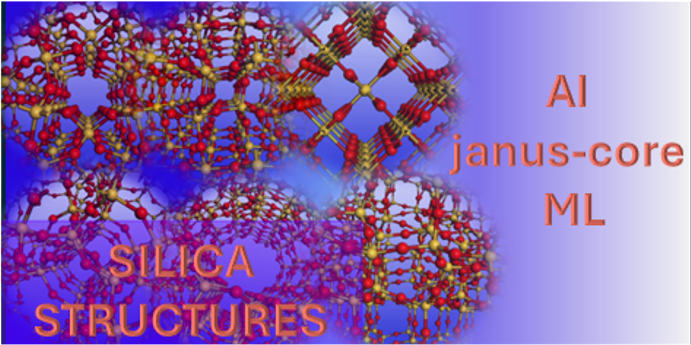Modelling Silica using MACE-MP Machine Learnt Interatomic Potentials

Zeolites and silica polymorphs are central to numerous industrial and environmental applications, including catalysis, gas separation, and CO₂ capture. As such, accurate and efficient modelling tools are crucial for advancing the rational design and understanding of these materials. The MACE-MP framework offers a unified solution capable of handling both dense and microporous silica structures with varying coordination environments, materials of high importance from earth sciences to electronics and catalysis.
In this study, we demonstrate the application of the MACE-MP machine-learned interatomic potential to model the structural and energetic properties of silica polymorphs and siliceous zeolites. Our results establish that this off-the-shelf model, trained on a general-purpose crystal dataset, achieves near-DFT accuracy across a broad range of siliceous systems, including high-pressure phase transitions and fluoride-containing frameworks. We show that MACE-MP effectively reproduces key structural and energetic features of siliceous materials. This includes framework cohesive energies and pressure-induced phase transitions such as the quartz-to-coesite and coesite-to-stishovite transformations, as well as the monoclinic-to-orthorhombic transition in ZSM-5. These results show excellent agreement with experimental data and DFT calculations.
Authors: Jamal Abdul Nasir, Jingcheng Guan,Woongkyu Jee, Scott M. Woodley, Alexey A.Sokol, C. Richard A. Catlow, Alin-Marin Elena
